-
 Bitcoin
Bitcoin $83,080.8873
-1.14% -
 Ethereum
Ethereum $1,791.4746
-1.45% -
 Tether USDt
Tether USDt $0.9998
0.02% -
 XRP
XRP $2.1324
-0.13% -
 BNB
BNB $592.0388
-1.08% -
 Solana
Solana $119.1957
-3.22% -
 USDC
USDC $1.0001
0.01% -
 Dogecoin
Dogecoin $0.1681
-1.64% -
 Cardano
Cardano $0.6497
-1.94% -
 TRON
TRON $0.2375
-0.61% -
 UNUS SED LEO
UNUS SED LEO $9.0588
-4.96% -
 Chainlink
Chainlink $12.6860
-2.48% -
 Toncoin
Toncoin $3.2620
-3.95% -
 Stellar
Stellar $0.2511
-3.60% -
 Avalanche
Avalanche $17.8165
-2.01% -
 Shiba Inu
Shiba Inu $0.0...01230
-0.03% -
 Sui
Sui $2.2118
-2.95% -
 Hedera
Hedera $0.1616
-2.22% -
 Litecoin
Litecoin $82.0450
-2.73% -
 Polkadot
Polkadot $3.9414
-2.77% -
 MANTRA
MANTRA $6.2727
-0.36% -
 Bitcoin Cash
Bitcoin Cash $300.4768
-0.31% -
 Dai
Dai $1.0001
0.02% -
 Bitget Token
Bitget Token $4.4469
-1.89% -
 Ethena USDe
Ethena USDe $0.9991
0.00% -
 Pi
Pi $0.5875
11.07% -
 Hyperliquid
Hyperliquid $11.8527
-4.06% -
 Monero
Monero $214.0698
-0.86% -
 Uniswap
Uniswap $5.8104
-2.14% -
 OKB
OKB $51.8157
5.85%
How does blockchain technology protect data security?
Blockchain's decentralized, immutable ledger, secured by cryptography and consensus mechanisms, offers enhanced data security compared to traditional databases, though vulnerabilities in smart contracts or individual nodes remain possible.
Feb 26, 2025 at 05:54 pm
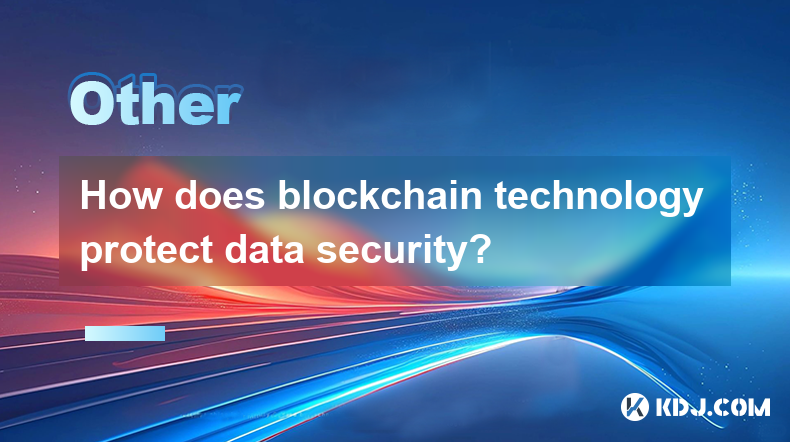
How Does Blockchain Technology Protect Data Security?
Key Points:
- Immutability: Blockchain's core strength lies in its immutable ledger. Once data is recorded, it cannot be altered or deleted, preventing tampering and ensuring data integrity. We will explore the mechanisms behind this immutability and its implications for security.
- Decentralization: Unlike centralized databases vulnerable to single points of failure, blockchain distributes data across a network of computers. This decentralization makes it incredibly difficult for malicious actors to compromise the entire system. We will delve into the specifics of this distribution and its resilience to attacks.
- Cryptography: Blockchain leverages sophisticated cryptographic techniques to secure data at every stage, from transaction creation to verification. We will examine the various cryptographic algorithms used and their role in maintaining confidentiality and authenticity.
- Transparency & Auditability: While individual user data might be pseudonymous, the blockchain itself is transparent. All transactions are publicly viewable (though identities may be masked), allowing for easy auditing and detection of anomalies. This aspect, however, requires careful consideration of privacy implications.
- Consensus Mechanisms: Blockchain networks use consensus mechanisms to validate and add new blocks to the chain. These mechanisms, such as Proof-of-Work or Proof-of-Stake, ensure that only legitimate transactions are added, preventing fraudulent activities. We will compare different consensus mechanisms and their respective security strengths.
Unordered List of Detailed Explanations:
- Immutability: The Unchangeable Ledger
Blockchain's immutability is its cornerstone security feature. It stems from the cryptographic chaining of blocks. Each block contains a timestamp, a hash of the previous block, and a set of validated transactions. This hash, a unique digital fingerprint of the block's contents, is cryptographically linked to the hash of the preceding block. Altering even a single bit of data in a block would change its hash, breaking the chain and rendering the altered block invalid. The entire network of nodes (computers participating in the blockchain) would reject the altered block, preserving the integrity of the original data. This immutability is further enhanced by the decentralized nature of the network. A single point of failure, a vulnerability common in centralized databases, simply doesn't exist. An attacker would need to control a majority of the network's nodes to successfully alter the blockchain – a computationally and economically infeasible task for most blockchains with significant network participation. This inherent resistance to tampering ensures that the data recorded on the blockchain remains accurate and trustworthy over time. However, it's crucial to understand that immutability applies to the chain itself, not necessarily to the data within the transactions. While the transaction record is immutable, the data represented by the transaction might still be vulnerable if not properly encrypted or handled. For instance, a poorly-designed smart contract could contain vulnerabilities that allow attackers to manipulate the outcome of the contract, even if the contract execution itself is recorded immutably on the blockchain.
- Decentralization: Distributed Ledger Technology (DLT)
Blockchain's decentralized architecture is a powerful defense against single points of failure and targeted attacks. Unlike traditional databases stored on a single server or a small cluster of servers, blockchain data is replicated across a vast network of independent nodes. This distribution means that no single entity controls the entire database. If one node is compromised, the remaining nodes continue to operate, maintaining the network's functionality and data integrity. This resilience to attacks is significantly higher than in centralized systems. A malicious actor would need to compromise a significant portion of the network's nodes simultaneously to alter the blockchain's data – a practically impossible task for large, well-established blockchains. Decentralization also fosters transparency and trust. Since the data is replicated across many nodes, it's difficult to manipulate data without detection. The distributed nature of the ledger makes it resistant to censorship, ensuring that information remains accessible even if certain nodes are taken offline or subjected to attacks. However, decentralization does not automatically equate to perfect security. The security of a decentralized system still depends on the security practices of individual nodes and the overall robustness of the network's consensus mechanism. Vulnerabilities in the consensus algorithm or weaknesses in individual nodes can still be exploited to compromise the system, though the impact is likely to be less severe than in a centralized system.
- Cryptography: Securing Every Step of the Way
Cryptography plays a crucial role in securing every aspect of blockchain technology. From the creation of digital signatures to the verification of transactions, cryptographic algorithms are employed to ensure data confidentiality, integrity, and authenticity. Public-key cryptography, which utilizes a pair of keys (a public key and a private key), is central to blockchain security. The public key is used to verify transactions, while the private key is kept secret by the user and used to sign transactions, proving ownership and authenticity. Hashing algorithms, which produce a unique digital fingerprint of data, are used to create the cryptographic links between blocks in the chain. Any change to the data will result in a different hash, immediately revealing any tampering attempts. Digital signatures, generated using cryptographic algorithms, are used to verify the authenticity and integrity of transactions. They provide a mechanism to prove that a transaction was indeed signed by the claimed owner of the private key, preventing forgery and unauthorized modifications. The specific cryptographic algorithms used can vary depending on the blockchain, but they all aim to provide strong security against various attacks, such as unauthorized access, data alteration, and denial-of-service attacks. However, it's important to note that the security of the cryptographic algorithms relies on the underlying mathematical assumptions. Advances in cryptography and computing power could potentially weaken the security of existing algorithms, requiring updates and improvements to maintain the blockchain's security.
- Transparency & Auditability: Public Ledger, Private Data (Potentially)
Blockchain's transparency is a double-edged sword. While all transactions are publicly viewable on the blockchain (though often pseudonymous), this transparency allows for easy auditing and detection of anomalies. This openness makes it difficult to hide fraudulent activities, as all transactions are recorded and readily accessible for review. This aspect contributes to the trustworthiness and accountability of the system. However, it’s important to differentiate between transparency of the blockchain and privacy of user data. While transactions are public, user identities are often masked using pseudonymous addresses. This allows for the verification of transactions without revealing sensitive personal information. However, techniques like transaction analysis and on-chain data correlation can sometimes link pseudonymous addresses to real-world identities, posing a privacy concern. Therefore, while the transparency of the blockchain enhances security by allowing for public scrutiny, it’s crucial to consider the privacy implications and implement appropriate measures to protect sensitive user data. Techniques like zero-knowledge proofs and confidential transactions are being developed to improve privacy while maintaining the transparency and auditability benefits of the blockchain.
- Consensus Mechanisms: Ensuring Legitimate Transactions
Consensus mechanisms are algorithms that govern how new blocks are added to the blockchain and how the network reaches agreement on the validity of transactions. These mechanisms are critical to the security and integrity of the blockchain. Different consensus mechanisms offer varying levels of security and efficiency. Proof-of-Work (PoW), used in Bitcoin, requires miners to solve complex computational puzzles to add new blocks. This process consumes significant energy but provides strong security against attacks. Proof-of-Stake (PoS), used in many newer blockchains, allows validators to stake their cryptocurrency to participate in the consensus process. This is generally more energy-efficient than PoW and offers comparable security. Other consensus mechanisms, such as Delegated Proof-of-Stake (DPoS) and Practical Byzantine Fault Tolerance (PBFT), offer different trade-offs between security, efficiency, and scalability. The choice of consensus mechanism significantly impacts the blockchain's security. A robust consensus mechanism ensures that only legitimate transactions are added to the chain, preventing fraudulent activities and maintaining data integrity. However, even the most secure consensus mechanisms can be vulnerable to certain types of attacks. For example, 51% attacks, where a malicious actor controls more than half of the network's hashing power (in PoW) or stake (in PoS), can potentially compromise the blockchain. The security of the consensus mechanism is therefore crucial to the overall security of the blockchain network.
FAQs:
Q: Is blockchain technology completely secure?
A: While blockchain technology offers significantly enhanced security compared to traditional databases, it is not completely invulnerable. Weaknesses can exist in the implementation of the blockchain, in the smart contracts deployed on it, or in the security practices of individual nodes. Furthermore, the security of a blockchain also depends on the strength of its cryptographic algorithms and the robustness of its consensus mechanism. While theoretically secure, practical implementations can have vulnerabilities.
Q: How does blockchain protect against data breaches?
A: Blockchain protects against data breaches primarily through its immutability and decentralization. Because data is distributed across many nodes, a breach of a single node does not compromise the entire system. Moreover, the immutability of the blockchain prevents unauthorized alteration or deletion of data.
Q: Can blockchain data be hacked?
A: While the blockchain itself is highly resistant to hacking, the data within the transactions can be vulnerable if not properly secured. Poorly written smart contracts, for instance, can be exploited, and if private keys are compromised, transactions can be unauthorized. The blockchain's security is only as strong as its weakest link.
Q: What are the limitations of blockchain's data security?
A: Limitations include the potential for 51% attacks (though increasingly difficult with larger, more established blockchains), vulnerabilities in smart contracts, and the potential for privacy breaches despite pseudonymous transactions. Furthermore, the scalability of some blockchain networks can limit their ability to handle large volumes of data securely. Finally, the security of the entire system relies on the security practices of each individual node on the network.
Q: How does blockchain compare to traditional database security?
A: Blockchain offers superior security to traditional centralized databases in several ways. Its decentralized architecture, immutability, and cryptographic security features make it far more resilient to single points of failure and various attacks. However, traditional databases might offer advantages in terms of speed and scalability for certain applications. The choice between blockchain and traditional databases depends on the specific security and performance requirements of the application.
Disclaimer:info@kdj.com
The information provided is not trading advice. kdj.com does not assume any responsibility for any investments made based on the information provided in this article. Cryptocurrencies are highly volatile and it is highly recommended that you invest with caution after thorough research!
If you believe that the content used on this website infringes your copyright, please contact us immediately (info@kdj.com) and we will delete it promptly.
- The US Government's Strategic Crypto Reserve Will Be Unveiled This Saturday
- 2025-04-06 05:40:12
- Fartcoin (FAR) price soared 32% to trade at $0.5155
- 2025-04-06 05:40:12
- If Shiba Inu Doubles the Market Cap of Dogecoin, It Could Move Close to Surpassing Its Previous All-Time High (ATH)
- 2025-04-06 05:35:12
- USDtb Breaks into the Top 10 Stablecoins by Market Cap, Tether Loses 60% of Market Dominance
- 2025-04-06 05:35:12
- Meme Coin Mayhem: Markets Stagger, But Troller Cat Roars Ahead
- 2025-04-06 05:30:12
- I'm known for my optimism. I try to give people something to build, not just something to worry about.
- 2025-04-06 05:30:12
Related knowledge

Is the ranking of Chinese blockchain apps real and reliable?
Apr 04,2025 at 09:01pm
The ranking of Chinese blockchain apps has become a topic of interest for many in the cryptocurrency community, as it provides insights into the popularity and adoption of blockchain technology within China. However, the reliability and authenticity of these rankings are often questioned. This article aims to delve into the factors that influence these ...
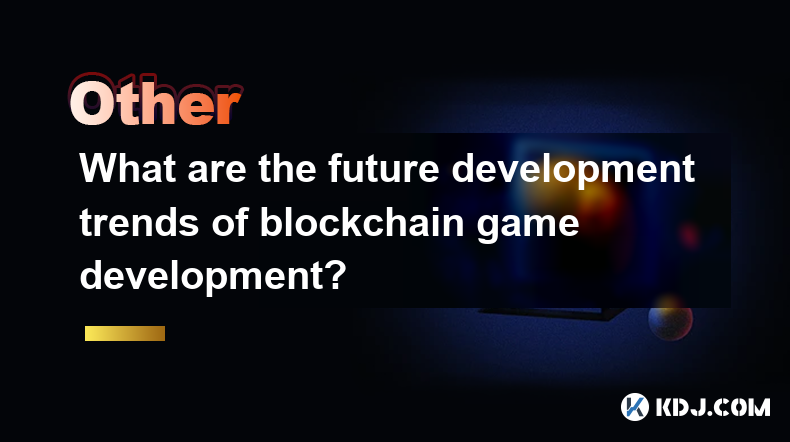
What are the future development trends of blockchain game development?
Apr 03,2025 at 05:00am
Blockchain technology has revolutionized various industries, and gaming is no exception. As we look to the future, several trends are set to shape the development of blockchain games. These trends not only promise to enhance the gaming experience but also to integrate blockchain technology more seamlessly into the gaming ecosystem. Let's explore these t...

What are the high-return opportunities for blockchain investments?
Apr 05,2025 at 02:35pm
Blockchain technology has revolutionized the financial world, offering numerous high-return investment opportunities. These opportunities span various sectors within the cryptocurrency ecosystem, including cryptocurrencies, decentralized finance (DeFi), non-fungible tokens (NFTs), and blockchain startups. Each of these areas presents unique risks and re...
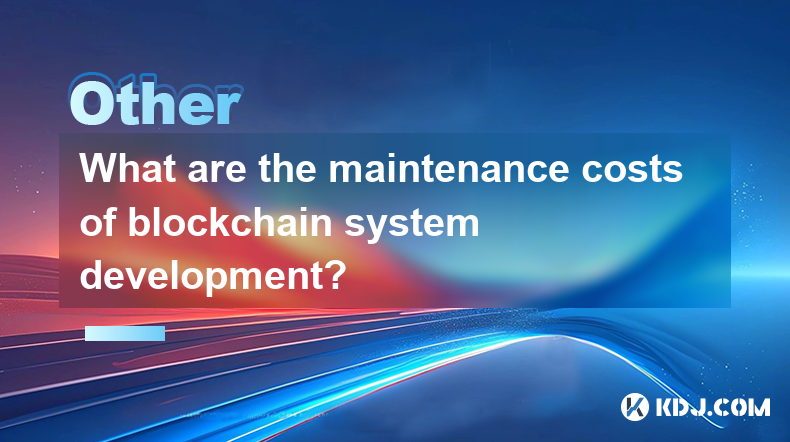
What are the maintenance costs of blockchain system development?
Apr 03,2025 at 06:07pm
The maintenance costs of blockchain system development are multifaceted and depend on various factors. These costs can include technical maintenance, security updates, infrastructure expenses, and personnel costs. Understanding these elements is crucial for anyone planning to develop or maintain a blockchain system. Technical MaintenanceTechnical mainte...
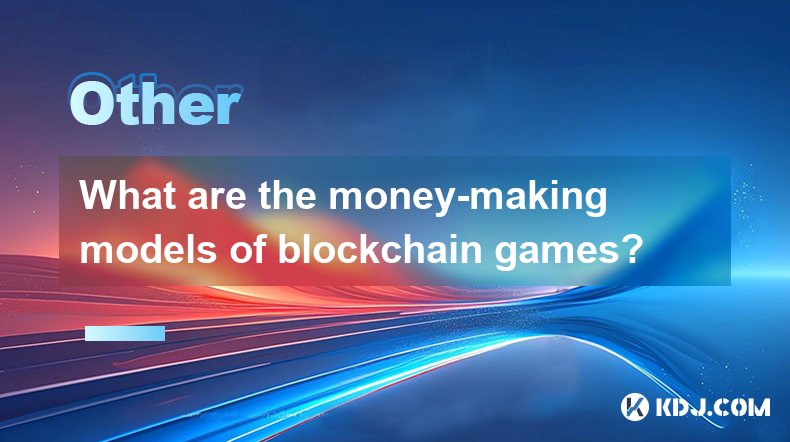
What are the money-making models of blockchain games?
Apr 04,2025 at 02:00pm
Blockchain games have emerged as a revolutionary way for players to earn real money while enjoying their favorite pastime. These games leverage the power of blockchain technology to create unique money-making models that benefit both the players and the developers. In this article, we will explore the various money-making models of blockchain games and ...
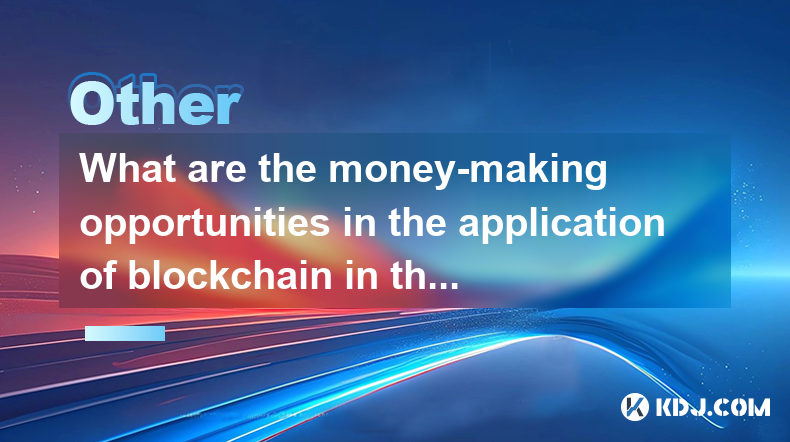
What are the money-making opportunities in the application of blockchain in the field of Internet of Things?
Apr 05,2025 at 10:35pm
The integration of blockchain technology with the Internet of Things (IoT) presents numerous money-making opportunities. Blockchain, with its decentralized and secure nature, can revolutionize how IoT devices interact, manage data, and conduct transactions. This article will explore various avenues where entrepreneurs, developers, and investors can capi...

Is the ranking of Chinese blockchain apps real and reliable?
Apr 04,2025 at 09:01pm
The ranking of Chinese blockchain apps has become a topic of interest for many in the cryptocurrency community, as it provides insights into the popularity and adoption of blockchain technology within China. However, the reliability and authenticity of these rankings are often questioned. This article aims to delve into the factors that influence these ...

What are the future development trends of blockchain game development?
Apr 03,2025 at 05:00am
Blockchain technology has revolutionized various industries, and gaming is no exception. As we look to the future, several trends are set to shape the development of blockchain games. These trends not only promise to enhance the gaming experience but also to integrate blockchain technology more seamlessly into the gaming ecosystem. Let's explore these t...

What are the high-return opportunities for blockchain investments?
Apr 05,2025 at 02:35pm
Blockchain technology has revolutionized the financial world, offering numerous high-return investment opportunities. These opportunities span various sectors within the cryptocurrency ecosystem, including cryptocurrencies, decentralized finance (DeFi), non-fungible tokens (NFTs), and blockchain startups. Each of these areas presents unique risks and re...

What are the maintenance costs of blockchain system development?
Apr 03,2025 at 06:07pm
The maintenance costs of blockchain system development are multifaceted and depend on various factors. These costs can include technical maintenance, security updates, infrastructure expenses, and personnel costs. Understanding these elements is crucial for anyone planning to develop or maintain a blockchain system. Technical MaintenanceTechnical mainte...

What are the money-making models of blockchain games?
Apr 04,2025 at 02:00pm
Blockchain games have emerged as a revolutionary way for players to earn real money while enjoying their favorite pastime. These games leverage the power of blockchain technology to create unique money-making models that benefit both the players and the developers. In this article, we will explore the various money-making models of blockchain games and ...

What are the money-making opportunities in the application of blockchain in the field of Internet of Things?
Apr 05,2025 at 10:35pm
The integration of blockchain technology with the Internet of Things (IoT) presents numerous money-making opportunities. Blockchain, with its decentralized and secure nature, can revolutionize how IoT devices interact, manage data, and conduct transactions. This article will explore various avenues where entrepreneurs, developers, and investors can capi...
See all articles





















































































